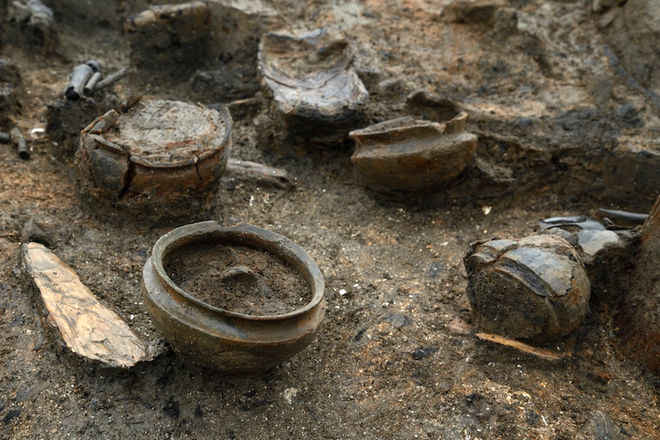Located in eastern England over 3,000 years ago was a wonderful Bronze Age village. Unfortunately, this village was burnt down. Experts now believe that this village’s destruction was done on purpose by raiders.
Experts have been doing a thorough investigation of four separate houses that they believe were burnt down at the same time. Selina Davenport, one of the archaeologists in charge of this project states, “We’ve been working with [a fire] investigator who works a lot with modern fires, and he thinks there’s a good chance that the fire was set deliberately.”

Photo: Live Science
The excavation at Must Farm started out as a normal archaeological dig. Davenport and her team were able to find a plethora of well preserved items that date back to the Bronze Age. However, during this excavation, Davenport and her team found that this fire was not a normal house fire. Davenport states, “for that to have spread from something like a spark off a hearth is unlikely. These people were really good at living in wooden houses, so I don’t think they were just catching fire accidentally very often.”
What Did These Researchers Find?
This small village that is located in Peterbourough contained eight circular structures that were built on stilts. These houses were built out of wood and were placed on stilts because they sat above a river. The archaeologists have dated the structures by the wood’s tree rings, placing these houses back between 1290 and 1250 B.C.. Around the same time that the houses were constructed, the villagers had began building a wall. Experts believe that this was to help keep out hostile intruders.

Photo: Live Science
Unfortunately, as the years went on, the village was eventually burned down. All of those who survived abandoned their village and headed elsewhere. Archaeologists have yet to discover any evidence that the villagers attempted to resettle or even recover any items. Experts have said that the villagers left in a hurry leaving behind items such as weapons, tools, kitchen pottery, and jewelry. During their excavation, researchers have found a plethora of these items that the villagers were too busy to retrieve.

Photo: Live Science
Luckily, many of these items were preserved within the marshy ground. Researchers have found items like wooden spoons, buckets, bronze tipped spears, and even what is considered Britain’s oldest wooden wheel. All of these items were perfectly preserved within the marsh. These items have given experts a better look at how these villagers lived their lives 3,000 years ago.
During their excavation, researchers found one single human skull. However, experts believe that this particular skull was a “curated item,” that was kept by one of the villagers. According to Davenport, this was not an uncommon practice during this time. They also found two entire skeletons that belonged to two dogs. Davenport states, “They were the only animals we believe were actually living on the site with the people, and these seem to have been the only casualties of the fire.”
Despite all of the great items Davenport’s team found, most of this site has been destroyed. It wasn’t until the 1990’s that this village was even recognized as a an archeological site. Before, most of the village had been buried or destroyed by quarrying. As the excavation begins to wind down, the site will be returned to its owners. However, researchers will continue to research the artifacts they found. Davenport states, “Even off-site we can continue analyzing it, we can continue studying it, and trying to figure out what was going on. So, we’ll be able to get a lot of information about life in the Bronze Age from our site, and we wouldn’t be able to do that if it was still in the ground.”

